
During my first trip to Tena, in the Ecuadorian Amazon, I went to an Amazonian products fair called Mikuna Kawsana which took place at the Casa Bonuccelli on April 20, 2024. There I had the opportunity to meet some local producers who were exhibiting very interesting products I will be describing in next posts. One of them was Pakarina, a kichwa woman who was offering a solid shampoo made out of wituk or jagua, also known as jenipapo in the Brazilian Amazon. She was doing body painting with an organic dye made with the fruit of this fantastic tree whose scientific name is Genipa americana.
Later on, on my second trip to Tena, I contacted her for a video interview I will be posting right here soon. In the meanwhile, I decided to do a little research about the alimentary and medicinal uses of wituk.

Top 12 incredible uses for wituk (G. americana) you won’t believe!
From the most common applications (edible) to the unbelievable ones (cancer cure), here you have my top 12 of the most amazing benefits this awesome amazonian fruit has.

*b. Genipa, seu Ianipaba = Genipa americana
1. Nutritional Use of Wituk (Genipa americana)
The leaves and fruits of the wituk tree have long served as a vital food source, particularly in historic and prehistoric times. While its role as a staple diet has diminished, the fruit is still consumed in rural areas, albeit to a lesser extent. The flavor of wituk fruit isn’t widely appreciated; many describe it as slightly sour, akin to dried pears or apples, but with a stronger, somewhat soapy or rotten aftertaste in certain regions.
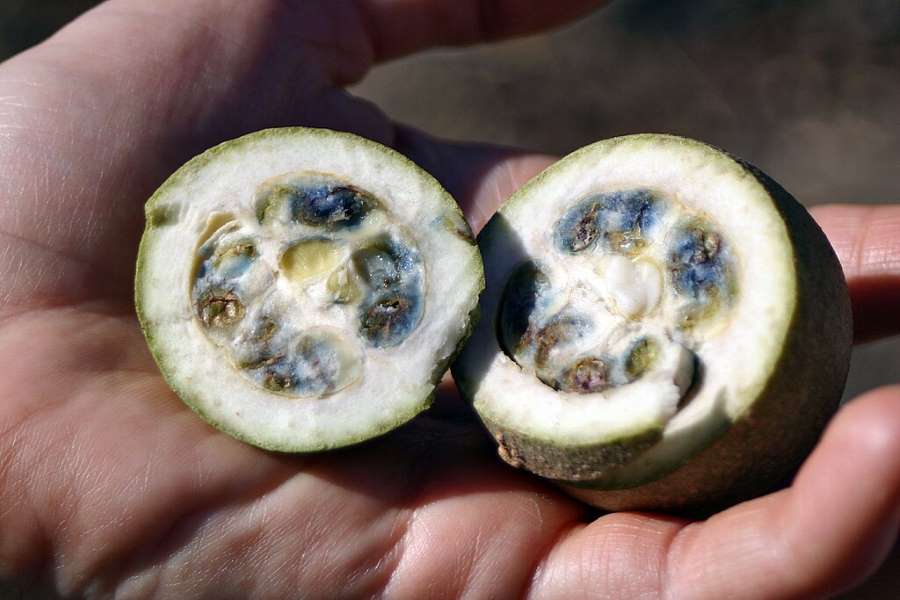
Despite its peculiar taste, the fruit is utilized in various culinary preparations. It is most commonly used to make juices, jellies, candies, and even liqueurs, showcasing its versatility in local cuisines. The persistence of these uses highlights an underlying value that transcends its flavor, suggesting that the wituk fruit’s benefits are significant enough to overlook its taste.
As detailed in the study by Francis, J. K., Lowe, C. A., and other collaborators (2000), the wituk tree’s ecological and bioecological aspects suggest that its historical importance as a food source is backed by substantial traditional knowledge and usage. This resource from the USDA Forest Service provides comprehensive insights into the tree’s characteristics and applications, underscoring its ongoing relevance in cultural and dietary contexts.
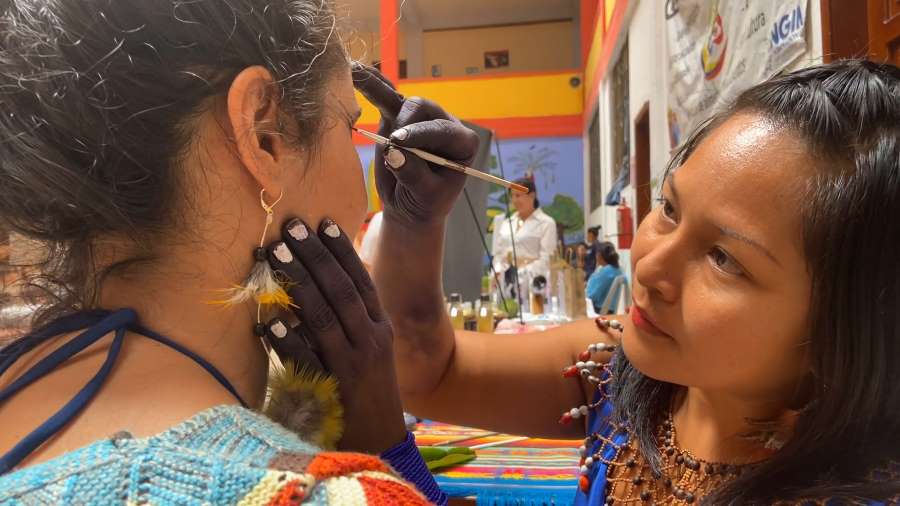
2. Traditional uses of Wituk as a colorant
Wituk, or Genipa americana, has a rich tradition among indigenous peoples as a natural pigment for body painting. The fruit produces a dark blue colorant, which has been utilized not only for artistic and cultural expressions but also holds potential as an organic alternative to synthetic dyes in the food industry. This sustainable use underscores the fruit’s versatility and its ecological benefits, offering a natural solution that could reduce reliance on chemical additives.

3. Contemporary uses as Hair Care Product
Beyond its use as a dye, wituk has found its way into contemporary health and beauty products, such as the solid shampoo created by Pakarina, a local Kichwa artisan. In an interview with delamazonas.com, Pakarina explained that while the shampoo incorporates wituk’s natural dye, it is formulated in such a way that it does not color the hair. Instead, the shampoo leverages the antibacterial properties of wituk to combat dandruff effectively. Furthermore, the antioxidants present in the fruit are harnessed to rejuvenate the scalp, strengthen hair roots, and prevent hair loss. This innovative use of wituk not only provides a holistic approach to hair care but also highlights the ongoing relevance of traditional knowledge in developing modern health and beauty solutions.
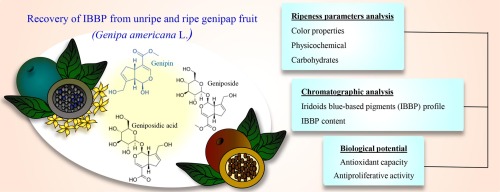
4. Medicinal Benefits of Unripe Wituk Fruit for Skin Care
The unripe fruits of the wituk, or jagua tree, have been traditionally used for their medicinal properties, particularly in healing small wounds and ulcers. This therapeutic use is supported by its potent antibacterial and anti-inflammatory properties, which have been well-documented in scientific research. A study by Tallent in 1964 identified specific compounds in the fruit that have antibiotic qualities, indicating their effectiveness in preventing bacterial growth and aiding in wound care.
Further research by Koo and colleagues in 2004 expanded on these findings by examining genipin, a compound extracted from Genipa americana. Their study, published in the European Journal of Pharmacology, demonstrated the anti-inflammatory effects of genipin, providing a scientific basis for its use in treating skin inflammations and promoting healing. The anti-inflammatory properties make the juice of the unripe wituk fruit particularly valuable in a topical application for skin conditions, enhancing the skin’s healing process and reducing irritation.
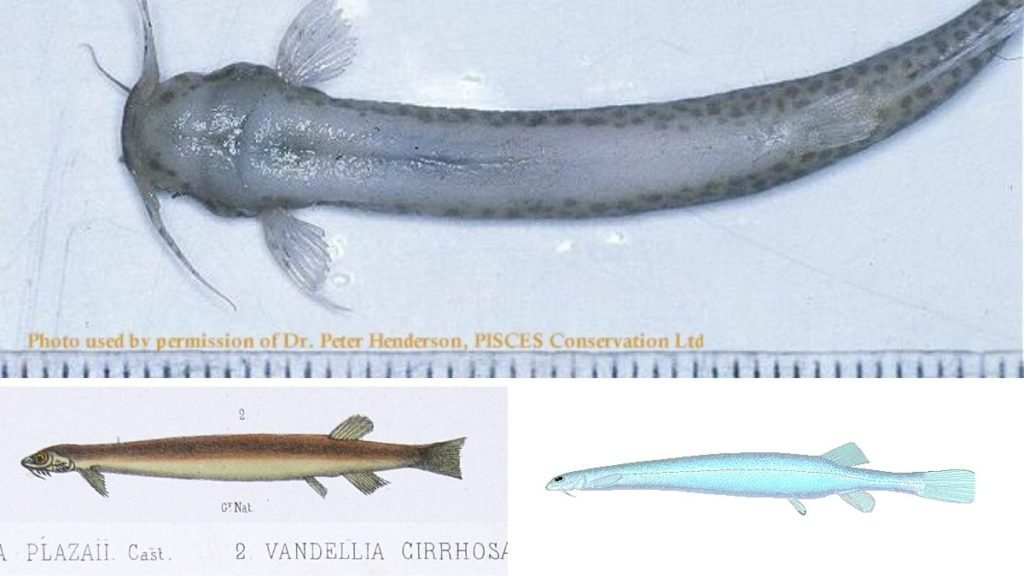
5. Unique Medicinal Application of Wituk for fighting the Vampire Fish
Wituk (Genipa americana) has a unique and somewhat surprising medicinal use: it is reputed to be the only natural remedy effective against the South American parasitic fish, Vandellia sp., commonly referred to as the vampire fish. This fish is known for its unsettling habit of entering human orifices. A preparation from the wituk tree can facilitate the removal of this parasite, offering a natural solution to a potentially distressing problem. This specific application is highlighted in the comprehensive study by Francis, J.K., and Lowe, C.A., which discusses the various uses of the tree in traditional medicine.

6. Traditional Remedial Uses of Wituk in Brazilian Folk Medicine
In Brazilian folk medicine, wituk (Genipa americana) is widely used for its therapeutic properties. It is popularly employed to treat anemia, serving as a natural remedy to boost hemoglobin levels. Additionally, its applications extend to gastrointestinal health, where it is used as an antidiarrheal agent, helping to alleviate symptoms and restore normal function. Wituk is also valued for its anti-syphilitic properties, making it a traditional treatment for syphilis. These uses are supported by recent scientific investigations that have isolated novel flavonoids from the leaves of the tree, compounds known for their broad medicinal effects. The study conducted by Silva et al. in 2018 mention these properties, reinforcing the plant’s relevance in traditional healing practices and its potential in modern medical applications.
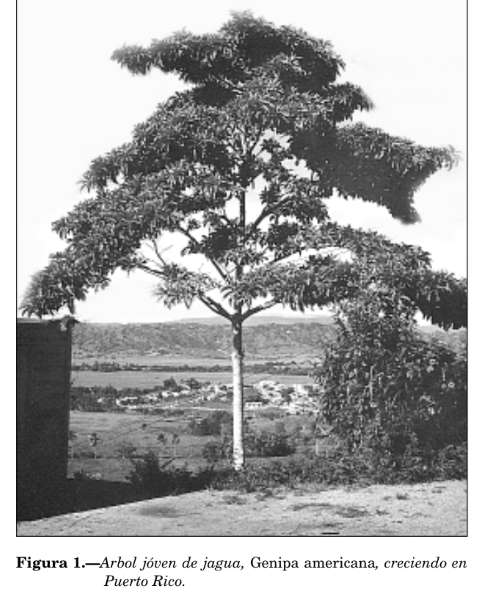
7. Flood Tolerance and Environmental Benefits of G. americana
Genipa americana, a neotropical fruit-tree, exhibits exceptional flood tolerance, making it a valuable species for ecological restoration projects, especially in gallery forests. Research conducted by Mielke et al. in 2003 demonstrates the tree’s resilience, with a study showing that during a prolonged 63-day flooding period, the survival rates of G. americana seedlings reached 100%. This ability not only highlights the tree’s robustness under extreme waterlogged conditions but also its potential role in stabilizing flood-prone ecosystems and enhancing biodiversity. The study’s findings underscore the importance of incorporating such flood-resistant species in restoration efforts to achieve sustainable environmental recovery and maintenance.
8. Ethnopharmacological Applications of Genipa americana for Infections
The Genipa americana tree, commonly known as “jenipapo” or “jenipapeiro,” is noted for its use in traditional medicine to treat parasitic and bacterial infections. Recent scientific studies have begun to explore the basis of these traditional uses, particularly focusing on the antiparasitic properties of polysaccharide extracts from the tree’s leaves. Research conducted by da Silva Souza et al. in 2018 has been pivotal in experimentally validating the antiparasitic effectiveness of these extracts, specifically against Trypanosoma cruzi, the causative agent of Chagas disease.
9. Antiprotozoal Properties of Wituk Leaves Against Chagas Disease
Furthering the ethnopharmacological relevance of Genipa americana, the same study has demonstrated that extracts from wituk leaves exhibit significant antiprotozoal activity against Trypanosoma cruzi, the protozoan responsible for Chagas disease. This activity suggests that the extracts induce cell death in the protozoan through necrosis, which involves reactive oxygen species. This mechanism offers a promising avenue for the development of new treatments for Chagas disease, leveraging natural compounds that may offer fewer side effects compared to traditional antiprotozoal drugs.
10. Phytoremediation Potential of G. americana in Chromium-Contaminated Environments
The Genipa americana tree has shown significant potential as a phytoremediator, particularly for environments contaminated with chromium, a toxic heavy metal. A study by Barbosa et al. in 2007 highlighted that seedlings of this species could absorb substantial amounts of chromium (Cr3+) from solutions, immobilizing and storing it predominantly in their roots. This capability not only helps in cleansing chromium-polluted watersheds but also stabilizes the metal within the plant system, preventing further environmental contamination. As such, G. americana proves effective as both a rhizofilterer and a phytostabilizer, making it a valuable species for ecological restoration projects in areas affected by heavy metal pollution.
11. Antioxidant and Antiproliferative Properties of Genipa americana Fruit Extract
Research has shown that the fruit of the Genipa americana, commonly known as genipap, possesses potent antioxidant properties, which were most effectively demonstrated in the ORAC test, followed by the TEAC and DPPH assays. These tests reveal the fruit’s capability to neutralize harmful peroxyl radicals—oxygen molecules that can damage cells and DNA, potentially leading to serious health issues such as cancer, inflammation, and heart disease. The fruit is notably rich in iridoids, compounds known for their effective antioxidant activity.
A study by Neri-Numa et al. in 2020 further supports these findings, suggesting that extracts from genipap fruit not only exhibit strong antioxidant effects but also possess antiproliferative properties that could inhibit the growth of cancer cells. The study indicates that genipin, a derivative found in the fruit, is bioavailable, meaning it can be effectively absorbed and utilized by the body. This suggests that consuming genipap or its extracts could potentially replicate these health benefits.
12. Pharmacological Benefits of Wituk Fruit: Antitumoral and Antioxidant Properties
The wituk fruit (Genipa americana) has been the focus of various pharmacological studies due to its promising health benefits. In particular, research by Hsua et al. in 1997 explored the antitumoral properties of compounds found in the fruit, such as geniposidic acid and geniposide. Their study highlighted that these compounds not only exhibit cancer-fighting abilities but also offer protection against radiation damage, suggesting potential applications in cancer therapy and radioprotection.
Additionally, a 2012 study by Omena et al. investigated the antioxidant capabilities of different parts of the fruit, including the peel, pulp, and seeds. This research demonstrated that ethanol extracts from these parts show significant antioxidant activity, which can help combat oxidative stress in the body. The study also noted the extracts’ anti-acetylcholinesterase and cytotoxic activities, enhancing their potential in treating neurodegenerative diseases and cancer.
These findings underscore the therapeutic potential of wituk fruit in both oncological and general health contexts, offering insights into its use as a natural remedy with multiple health benefits. Further exploration and clinical trials could help integrate these properties into practical medical applications.
References:
Alves, J. S., Medeiros, L. A. D., Fernandes-Pedrosa, M. D. F., Araújo, R. M., & Zucolotto, S. M. (2017). Iridoids from leaf extract of Genipa americana. Revista Brasileira de Farmacognosia, 27, 641-644.
https://www.scielo.br/j/rbfar/a/Qz5mzvghfJJ93494PTMsfGF/?lang=en
Barbosa, R. M. T., De Almeida, A. A. F., Mielke, M. S., Loguercio, L. L., Mangabeira, P. A., & Gomes, F. P. (2007). A physiological analysis of Genipa americana L.: a potential phytoremediator tree for chromium polluted watersheds. Environmental and Experimental Botany, 61(3), 264-271.
Cummins, I., & Logan-Hines, E. Adapting Indigenous Agroforestry Systems for Integrative Landscape Management and Sustainable Supply Chain Development in Napo, Ecuador.
da Silva Souza, R. O., Sousa, P. L., Sampaio, T. L., Tessarolo, L. D., Silva, F. C. O., Pereira, M. G., & Martins, A. M. C. (2018). Trypanocidal activity of polysaccharide extract from Genipa americana leaves. Journal of ethnopharmacology, 210, 311-317.
https://www.sciencedirect.com/science/article/pii/S0378874117320317
Francis, J. K., Francis, J. K., & Lowe, C. A. (2000). Genipa americana L. Jagua, genipa. Bioecología de árboles nativos y exóticos de Puerto Rico y las Indias Occidentales, 231-235.
https://www.fs.usda.gov/research/treesearch/download/2862.pdf#page=243
Mielke, M. S., de Almeida, A. A. F., Gomes, F. P., Aguilar, M. A. G., & Mangabeira, P. A. O. (2003). Leaf gas exchange, chlorophyll fluorescence and growth responses of Genipa americana seedlings to soil flooding. Environmental and experimental botany, 50(3), 221-231.
https://www.academia.edu/download/44890656/Genipa_americana.pdf
Neri-Numa, I. A., Pessôa, M. G., Arruda, H. S., Pereira, G. A., Paulino, B. N., Angolini, C. F. F., … & Pastore, G. M. (2020). Genipap (Genipa americana L.) fruit extract as a source of antioxidant and antiproliferative iridoids. Food research international, 134, 109252.
https://www.sciencedirect.com/science/article/pii/S0963996920302775
Silva, L. M. P., Alves, J. S. F., da Silva Siqueira, E. M., de Souza Neto, M. A., Abreu, L. S., Tavares, J. F., … & Zucolotto, S. M. (2018). Isolation and identification of the five novel flavonoids from Genipa americana leaves. Molecules, 23(10), 2521.
https://www.mdpi.com/1420-3049/23/10/2521

Daniel Osorio holds a BA in Social Communication with a mention in Communication for Humanistic Development (Universidad de Los Andes, 2005). Film and TV director and screenwriter. Specialist in Digital Marketing (SEO, SEM, Adwords, Adsense). General Manager (CEO) at DMT Agency. He is the founding editor of the portal delamazonas.com among others.
